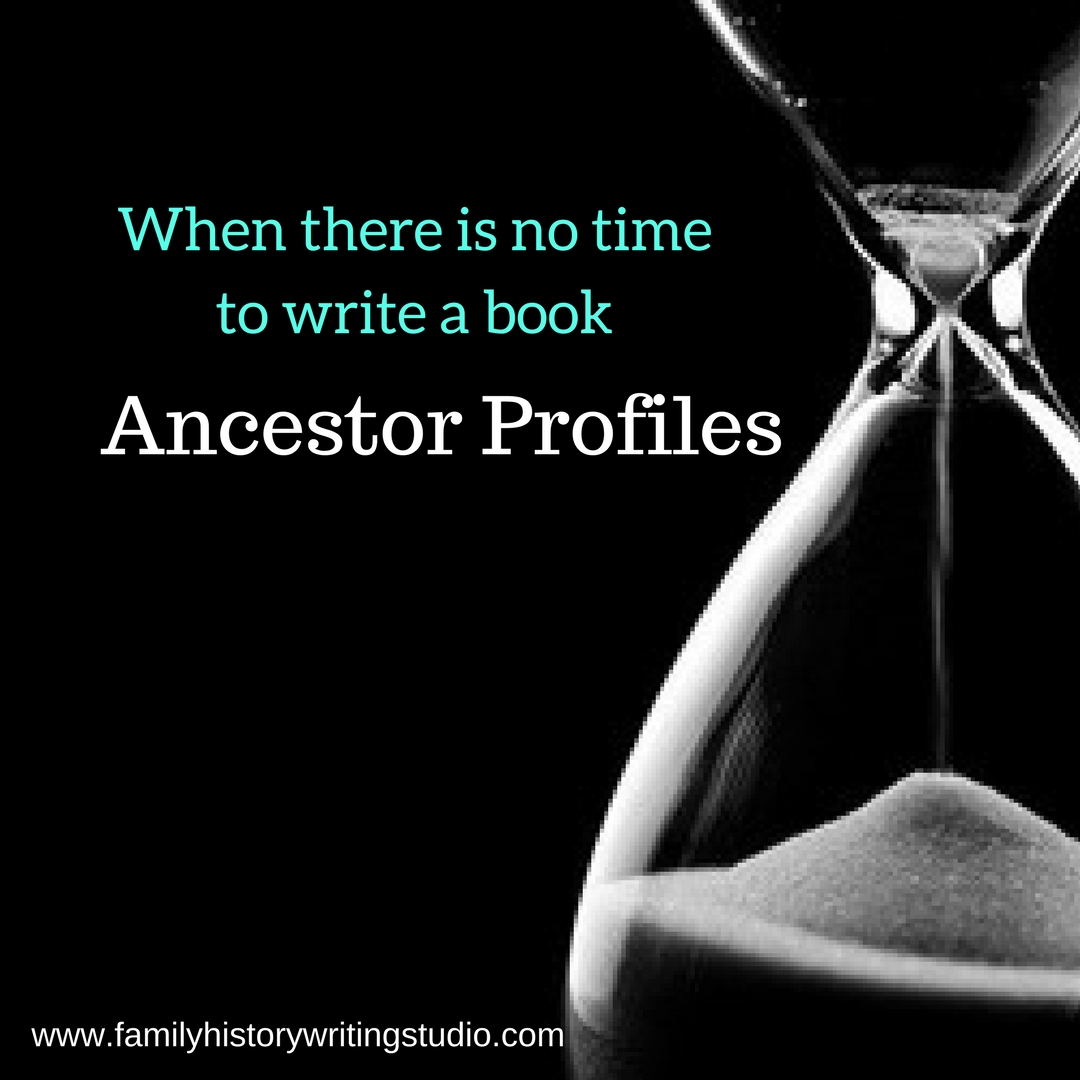How long does it take you to write 500 words? 1 hour? 2 hours? What if I told you that you could write your first ancestor story in the time it takes you to write 500 words. It’s true.
Too often we get caught up in the impression that writing our family history is going to be this big massive, overwhelming task. So we shy away from it and promise ourselves some day. But it doesn’t have to be that way because in 500 words you can write a story in the format of an Ancestor Profile.
Ancestor Profiles are the perfect place to begin. They are one ancestor, one story and they can take all the scary out of beginning to write your family history.
What is an Ancestor Profile?
An Ancestor Profile is a snapshot of a single ancestor. It can be an overview of an ancestor’s life, but more importantly, it should focus on something specific or unique about your ancestor. It can highlight an ancestor’s achievements or accomplishments or an event or critical aspect of your ancestor’s life. It’s not an autobiography or even a biography but more of a biography sketch. It’s not meant to convey every researched detail you have of an ancestor’s life but rather to shine a spotlight on a specific theme, or idea about that ancestor. It compliments a few pictures and a pedigree chart very nicely. Ancestor Profiles are quick and easy to read and that means our family will probably read them.
Ancestor profiles are not book-length they usually run about 500 to 2000 words with a snapshot profile tapping out at 500-600 words. In the time it takes you to write 500 words you can have completed your first Ancestor Profile. Then a little revision, polish and editing and your first ancestor profile is complete in no time at all.
To write an ancestor profile, you must have a good understanding of the ancestor either through your research, memory, observation, or a combination. Ancestor Profiles can be created out of an interview of the person or someone who knew the person, or your personal experiences and memory. You can create a profile by visiting the places where the person worked, lived and socialized.
For those earlier ancestors you might need to rely solely on your research but again focusing in on something that makes this ancestor stand out to you. Too many family history writers use ancestor profiles to create a mundane rundown of an ancestor’s life rather than a look at an aspect of the ancestor that gets to the heart of their character.
Just like family history narratives, profiles also rely on you to use some creative writing techniques to make your profile interesting and entertaining. In stories, we lean on description, details, action, structure and theme to create an enjoyable read. We also need to include all of these elements as part of an ancestor profile to make them entertaining and engaging.
Where to Use an Ancestor Profile
- If you have gaps in your ancestor’s research and you can’t tell a birth to death tale, you may want to consider the Ancestor Profile. They allow you to write about a specific person and a specific time frame, event or accomplishment rather a birth to death chronology.
- Ancestor Profiles are a great starting point for the beginner family history writer. I would encourage as you work through your research to create a profile for all of your direct ancestors, and those that are unique and have achievements in their life you would like to share. It’s a great way to start small, develop your writing skills and work your way up to a larger story.
- Ancestor Profiles fit in wonderfully in legacy books, alongside pictures and documents or as sidebars to the main story.
- Ancestor Profiles also make great blog posts, newsletter articles or even Facebook posts. You can even use them as the script to a short video or slideshow.
- Ancestor Profiles can also be weaved into a larger story.

A month or so ago, I sent in my family history essay, Brock Family Records II to supplement our lengthy, expensive 1927 Brock Family Records – which mostly listed staid, staunch pillars of the community. I did my best to tell the truth and the results were not flattering but I did bring out what a struggle our family has endured since we left Essex in 1603. I am the last living Brock in my line. I hope my analysis will be useful for other adventurers.